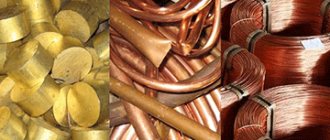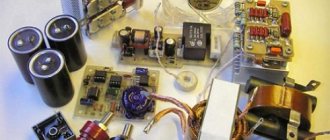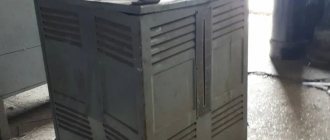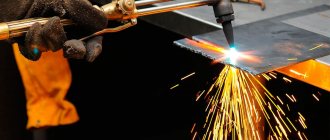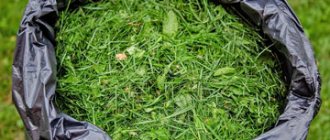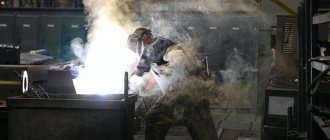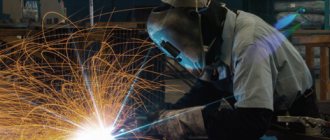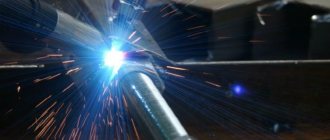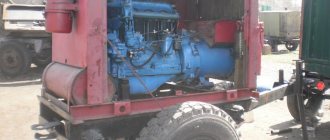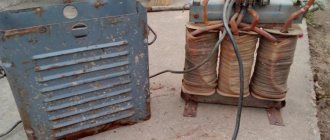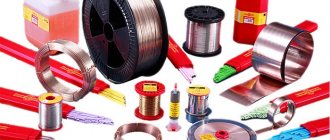You can listen to this article in full on our podcast:
During any production work, waste is generated that requires collection, processing or disposal. When welding, pieces of used electrodes go into the trash.
All by-products from any human activity are included in the Federal Waste Classification Catalog.
Waste from welding work in the form of pieces of steel electrodes is also included in the list under code 91910001205. They are classified as solid waste and are not dangerous to humans and nature.
Watch the video: Welding with plastic electrodes
Marking of electrodes for welding on stainless steel and cast iron
Any production process is accompanied by the formation of a secondary by-product, which can be reused to obtain raw materials or must be disposed of. The only question that remains open is specifying the type of scrap according to the type of work.
See also the article: Electrodes - recycling and scrap metal.
Welding waste
The modern level of access to information allows you to navigate in any aspect of interest. There are two ways to determine what waste is generated from welding with welding wire. The first option involves a search query, the second is to visit the waste codifier 2022 welding on the corresponding web resource.
The information collected in the FKKO online catalog identifies the following waste from welding and soldering work:
- residues and cinders of steel welding electrodes;
- remains of steel wire;
- decomposition products of calcium carbide.
This is what welding slag looks like
Electrode stubs
Each of the points is worth considering in more detail, especially for the first category.
Welding slag – FKKO classification
The waste codifier assigns its own number to each by-product resulting from human production activities. In particular, for welding slag, the FKKO code has three variations. This:
- 9 19 100 02 20 4 – directly the slag formed during the electric welding process;
- 9 19 111 21 20 4 – slag waste with a predominance of silicon dioxide;
- 9 19 111 24 20 4 – welding slag, mainly containing titanium dioxide.
The last two options allow us to determine the main component of this type of welding waste. A somewhat different situation arises if we consider welding slag in general. The composition of this type of waste will be determined by the type of electrodes used.
Chemical composition of welding slag
The melting process characteristic of electric welding is always accompanied by oxidation of the metal. This explains the entry of predominantly oxides into the slag crust. The hazard class of this type of waste is IV, which requires issuing a waste passport for welding slag. The chemical composition of such waste, as mentioned earlier, contains oxides of the following elements:
- silicon;
- titanium;
- manganese;
- iron;
- calcium;
- sodium;
- aluminum;
- potassium.
However, in some cases, calcium fluoride keeps company with the oxides. This is explained by the inclusion of the compound directly in the composition of salt fluxes, as well as certain coatings of welding electrodes.
The presence of basic oxides inside the slag crust is similarly related. In particular, manganese plays the role of a deoxidizer, removing sulfur from the metal, while simultaneously improving the quality of the weld. Silicon also has a similar effect. It allows you to avoid gas pores inside the weld seam, which are formed due to carbon monoxide that has not had time to release.
Weld
Thus, slag acts as a full-fledged “participant” in the welding process, determining the structure and quality of the seam, and not just a production waste. Therefore, the physical and chemical properties of welding slags are an important characteristic.
Basic parameters of the slag layer
All chemical properties of the slag are directly related to the weld seam. They include: the ability to deoxidize the seam, alloy it, form fusible compounds from oxides, as well as dissolve them and sulfides. From the physical side, important criteria for slag are:
- Thermophysical parameters: heat capacity, threshold melting and softening temperatures.
- Viscosity.
- Specific gravity of liquid slag melt.
- Properties of the hardened crust, causing its easy separation from the metal being processed.
- Gas permeability.
The melting temperature allows us to divide slags into two groups: “short” with a range of 1100 – 1200 0C and “long” with large threshold values. Today, preference is given to short slags, therefore, in the production of electrodes, the composition of coatings and fluxes is mixed at lower melting temperatures.
Basic electrode coating - characteristics
Any electrode coating is a mixture of crushed components and a binder. The powder mixture is applied to a metal rod and serves to protect against various external factors.
The main coating is designated by the letter "B" . This mixture is produced from calcium and magnesium carbonates. These include elements such as marble, magnesite, dolomite. Fluorspar (CaF2) is also added to the listed minerals as a slag diluent. calcium fluoride coated electrodes .
Characteristics:
How to choose a brand of electrodes for welding: types and selection criteria
When learning the basics of their future specialty, welders carefully study the brand of electrodes, because for different welding techniques different products are used, differing in diameter, as well as the chemical composition of the coating or spraying.
Letter designation
Today, the industry produces more than a hundred different brands, for example, Standard electrodes are intended for beginner performers, because they are easy to set on fire and are not afraid of dampness. All brands of similar rods burn quickly, forming a durable seam covered with slag.
The letters display the ratio of the electrode diameter to the coating thickness, it is expressed as a percentage: M - 20, C - 45, D - 80 and G - more than 80%. Option C is considered the most popular; more than 70% of produced electrodes have a similar ratio.
The coating option also has a letter designation:
- A - acidic.
- B - main view.
- C - containing cellulose.
- R - 50% rutile.
- P - other components; the first letters of the constituent elements are indicated in the marking, for example, RZh - rutile with an admixture of iron powder.
Decoding, difference
As a rule, the code consists of several groups of letters and numbers, which are printed on the packaging, and sometimes duplicated on the coating of the product, in order to easily identify the desired electrode during operation. The groups differ in individual meaning and nature of application:
- the first letter and numbers indicate the scope of application;
- then there are markings that help identify the manufacturer;
- Next comes the purpose and thickness of the coating, for example, U - for steels enriched with carbon, D - the amount of coating;
- the type of core is indicated separately;
- the numbers after the product type indicate the tensile strength of the seam joint in MPa;
- then the relative elongation is indicated, and in brackets the temperature at which the viscosity is maintained;
- at the end of the code the conditions of use and type of coverage are indicated.
SSSI
They are used in the installation of critical structures where plastic joints are needed that can withstand loads from an accidental impact and ambient temperatures down to -40 0C . Welding is carried out in any position, UONI 13/45 and 13/55 are used everywhere, the second type is shipbuilding, welding tanks, containers under high pressure.
ANO
The abbreviation is deciphered quite simply; the first two letters are Academy of Sciences, and the letter O is coating, followed by numbers indicating the model number of the consumable . The chemical composition is very extensive: manganese, silicon, phosphorus and sulfur, in tenths or hundredths of a percent. For a strong connection of metals with a thickness of more than 3 mm, it is necessary to increase the value of the welding current, and to avoid sticking of the electrode to the metal, the optimal welding mode must be observed.
OZL
Products with numbers 6 and 8 after the letter designation are used for steels with a high content of chromium and nickel; the seam joint is not subject to corrosion and can withstand temperatures not exceeding +1000 °C.
Disposal of welding residues and slag: recycling methods
In the modern world, almost any metal part or structure will be manufactured using electric welding.
The most important thing is that this will not affect its strength or rigidity in any way; in some cases, the use of welding allows you to completely abandon the use of bolts or rivets.
But due to its wide distribution, the amount of waste generated has increased: electrode residues or slag, which, when released, will negatively affect our environment.
Features of welding waste
Welding waste, like waste from any other industry, has its own characteristics and rules for disposal and recycling. Today we will help you familiarize yourself with all the rules and regulations.
Slag
The slag itself is a by-product when using arc welding, submerged arc welding, and powder arc welding. After cooling, it must be removed, but if it turns out that it is in contact with the metal of the part, then this is considered a significant defect and this seam must be corrected.
Slag formations occur when a small volume of metal hardens too quickly, preventing the slag from leaving the weld pool itself.
Such a seam will never pass quality control in production. This can now be easily verified using X-rays.
This is the easiest way to view complex structures where a person simply cannot see something. Its main tasks are:
- Protection of the area with molten metal from contact with air;
- Ensuring stable combustion of the welding arc;
- Good seam formation;
- Creating an optimal thermal regime for cooling the metal.
Composition and types
It is worth understanding that the composition of the slag obtained during the work will depend on the composition of the electrode coating or on the welding flux. Most often, the waste contains the following components: silicon dioxide, manganese oxide, titanium oxide, iron oxide and calcium oxide.
The welding slag itself belongs to the fourth waste hazard class, which means that this type of deposit is controlled and a waste passport must be issued for it. A passport is required only for waste of hazard classes 1-4.
It contains all instructions for further interaction, instructions for disposal or neutralization, and a full description of the composition.
If the company does not comply with these rules, then at the next inspection they will be charged a fine or suspension of all activities for up to 90 days.
Slag layer parameters
Slag, like any other product, has its own physical characteristics:
- Viscosity. If the slag is too viscous at the temperature at which metals solidify, the seam will form chaotically, copying the shape of the hardened slag crust;
- Melting temperature. Based on their thermal properties, slags are divided into two categories: short and long. The former can melt at a temperature of about 1100-1200 degrees Celsius, while the latter have a higher threshold value;
- Gas permeability of slag. A parameter responsible for the ability of gases released from metals to pass through. If the slag has poor gas permeability, then increased gas pressure will form on the metal surface, which will prevent their further release;
- Waste density. The slag must be able to quickly rise to the surface of the bath, but if it is excessively liquid, the slag will not be able to cover the seam.
Electrode stubs
According to the Federal Classification Catalog of Waste (FKKO), the cinders of welding electrodes were assigned their own individual number - 91910001205. It is understood that the waste poses the least danger to humans and the environment as a whole. And this is understandable, since during the welding process the electrode is used, as they say, “to the last”; at the output we have only part of the metal rod.
Disposal of welding waste
Recycling or disposal of welding residues is quite simple. For example, recycling electrodes consists only of remelting them, but to do this, you first need to sort them according to the composition of impurities or metal.
This will allow, after remelting, to immediately obtain steel alloyed with the desired chemical composition. Most often, it is used in the second round for the production of the same welding electrodes.
This is very convenient as there is no waste left.
If you have accumulated an impressive number of electrodes, then you can simply take the remaining metal rods to a scrap metal collection point. There will be nothing illegal about this.
The situation with slag is approximately the same. It is practiced to add a small volume of crushed slag crust to the flux. Although the slag itself differs in its chemical composition in that it contains more iron and calcium oxides.
On the contrary, there is less calcium fluoride. The resulting slag will have reduced resistance to the formation of cracks and various pores. All this makes it impossible to completely replace flux with slag.
But its small number will not lead to a noticeable deterioration in the quality of the weld.
The materials were taken from this web resource punktpriema.ru
Conclusion
Thus, recycling welding residues turns out to be a very necessary job. Especially when it comes to completely recyclable materials.
This will save the resources of our planet, as well as reduce the release of various toxic substances into the atmosphere.
Only by recycling materials will we be able to preserve nature for posterity, at least in the state in which it is now.
Welding workplace equipment
Safety regulations require proper organization of the welder’s workplace. This includes:
Lighting is allowed with a 220 V power supply only in a stationary place, when the lamp is fixed high above the table. If a welder needs light (for working in a tunnel, tank, mine), low-voltage lamps with a voltage of 12 V are used.
When working at height, a safety belt attached to a reliable element of the supporting structure is required. If you have to cook while standing in water (a well or tunnel is flooded), you should wear rubber work boots and rubber gloves. The device must be placed in a dry place, and all cables must be laid on top (contact with water is unacceptable). There should be a person near the welder to supervise. The second assistant stands next to the device and is ready to turn it off at any time.
Welding slag disposal
> Miscellaneous
Articles Loading...
This form can be printed from the MS Word editor (in page layout mode), where the viewing and printing options are set automatically. To go to MS Word, click the button
To print from the Code, see the Guide to Printing Reporting Forms.
Bravo Soft LLC
(name of company)
I APPROVED
(head of the organization; other official authorized to approve the instructions)
(surname, initials) _____________ (signature)
" " 20
INSTRUCTION N... for waste management of hazard class IV “Welding slag”
1. PURPOSE 3 2. SCOPE OF APPLICATION 3 3. RELATED DOCUMENTS 3 4. TERMS AND DEFINITIONS 3 5. GENERAL INFORMATION ABOUT WASTE 5 6. HAZARDOUS PROPERTIES AND IMPACT OF WASTE COMPONENTS ON THE ENVIRONMENT AND HUMAN BEINGS 5 6.1. Hazardous properties of waste components 5 6.2. Impact of waste components on the environment 5 6.3.
Impact of waste components on human health 5 7. FORMATION AND CONDITIONS OF WASTE ACCUMULATION 6 8. ACCOUNTING FOR WASTE FORMATION AND MOVEMENT 6 9. WASTE TRANSFER TO SPECIALIZED ENTERPRISES 6 10. WASTE TRANSPORTATION 7 11. DISPOSAL MEASURES VIA EMERGENCY SITUATIONS 7 12. DATA ABOUT DOCUMENT 7 13.
APPROVAL SHEET 8 14. MAILING SHEET 8
15. INFORMATION AND ISSUE SHEET 9
TARGET
This instruction establishes the procedure and safety requirements for handling waste of hazard class IV “Welding slag” at Bravo Soft LLC.
.
APPLICATION AREA
The instructions are applied by the company Bravo Soft LLC
and its divisions (branches).
TERMS AND DEFINITIONS
Environmental safety is the state of protection of the natural environment and vital human interests from the possible negative impact of economic and other activities, natural and man-made emergencies, and their consequences.
Requirements in the field of environmental protection (environmental requirements) – mandatory conditions, restrictions or a combination of them imposed on economic and other activities, established by laws, other regulatory legal acts, environmental regulations, state standards and other regulatory documents in the field of environmental protection. Specialized organizations are legal entities and individual entrepreneurs that collect, use, neutralize, transport and dispose of waste and have licenses to carry out such activities in accordance with existing legislation. Negative impact on the environment is the impact of economic and other activities, the consequences of which lead to negative changes in the quality of the environment. Production and consumption waste (hereinafter referred to as waste) - substances or objects that are generated in the process of production, performance of work, provision of services or in the process of consumption, which are disposed of, are intended for disposal or are subject to disposal in accordance with the Federal Law of June 24, 1998. N 89-FZ “On production and consumption waste”. Type of waste – a collection of waste that have common characteristics in accordance with the waste classification system. Waste hazard class is a characteristic of the environmental hazard of waste, which is established by the degree of its negative impact with the direct or possible impact of hazardous waste on the environment in accordance with the criteria established by the federal executive body that carries out state regulation in the field of environmental protection. Waste passport is a document certifying that waste belongs to the waste of the corresponding type and hazard class, containing information about its composition. Waste management is the activity of collecting, accumulating, transporting, processing, recycling, neutralizing, and disposing of waste. Waste disposal – storage and disposal of waste. Waste storage – storage of waste in specialized facilities for a period of more than eleven months for the purpose of disposal, neutralization, and burial. Waste disposal is the isolation of waste that is not subject to further disposal in special storage facilities in order to prevent the release of harmful substances into the environment. Waste storage facilities are specially equipped structures that are equipped in accordance with the requirements of legislation in the field of environmental protection and legislation in the field of ensuring the sanitary and epidemiological well-being of the population and are intended for long-term storage of waste for the purpose of their subsequent disposal, neutralization, and burial. Waste disposal facilities are specially equipped structures designed for waste disposal (landfill, sludge storage facility, including a sludge pit, tailings storage facility, rock dump, etc.) and including waste storage facilities and waste disposal facilities. Waste disposal limit is the maximum permissible amount of waste of a particular type that is allowed to be disposed of in a certain way for a specified period of time in waste disposal facilities, taking into account the environmental situation in the given territory. Waste generation standard is a specified amount of waste of a specific type during the production of a unit of product. Waste accumulation is the storage of waste for a period of no more than eleven months for the purpose of its further processing, disposal, neutralization, and disposal. Transportation of waste is the movement of waste using vehicles outside the boundaries of a land plot owned by a legal entity or individual entrepreneur or provided to them on other rights.
Waste neutralization - reducing the mass of waste, changing its composition, physical and chemical properties (including combustion and (or) disinfection in specialized installations) in order to reduce the negative impact of waste on human health and the environment.
GENERAL INFORMATION ABOUT WASTE
At the enterprise Bravo Soft LLC
waste of IV hazard class “Welding slag” (hereinafter referred to as Waste) is generated. In accordance with the Order of Rosprirodnadzor dated May 22, 2017 N 242 “On approval of the federal classification catalog of waste”:
Waste (code: 9 19 100 02 20 4) – IV hazard class (low-hazard waste), state of aggregation: solid.
Component composition of the Waste: – when melting OMM-5 electrodes (silicon dioxide – 39.1%, manganese oxide – 15.2%, iron oxide – 13.2%, calcium oxide – 3.6%); – when melting electrodes UONI 13/55 (silicon dioxide – 43.3%, manganese oxide – 4.6%, titanium oxide – 2.2%, iron oxide – 7.9%, calcium oxide – 42%);
– when melting Ts-3 electrodes (silicon dioxide – 47.5%, manganese oxide – 13.7%, titanium oxide – 12.2%, iron oxide – 18.5%, calcium oxide – 8.1%).
To establish a more accurate percentage composition, it is necessary to be guided by the results of a quantitative chemical analysis of the generated Waste.
HAZARDOUS PROPERTIES AND IMPACT OF WASTE COMPONENTS ON THE ENVIRONMENT AND HUMANS
6.1. Hazardous properties of waste components
Due to the fact that the Waste is classified as low-hazard, it does not have any serious impacts on the environment or human health, provided that the rules for its accumulation are followed.
In this case, individual components of this waste may have a negative impact.
Disposal of welding residues and slag: recycling methods
In the modern world, almost any metal part or structure will be manufactured using electric welding.
The most important thing is that this will not affect its strength or rigidity in any way; in some cases, the use of welding allows you to completely abandon the use of bolts or rivets.
But due to its wide distribution, the amount of waste generated has increased: electrode residues or slag, which, when released, will negatively affect our environment.
Features of welding waste
Welding waste, like waste from any other industry, has its own characteristics and rules for disposal and recycling. Today we will help you familiarize yourself with all the rules and regulations.
The slag itself is a by-product when using arc welding, submerged arc welding, and powder arc welding. After cooling, it must be removed, but if it turns out that it is in contact with the metal of the part, then this is considered a significant defect and this seam must be corrected.
Slag formations occur when a small volume of metal hardens too quickly, preventing the slag from leaving the weld pool itself.
Such a seam will never pass quality control in production. This can now be easily verified using X-rays.
This is the easiest way to view complex structures where a person simply cannot see something. Its main tasks are:
- Protection of the area with molten metal from contact with air;
- Ensuring stable combustion of the welding arc;
- Good seam formation;
- Creating an optimal thermal regime for cooling the metal.
Composition and types
It is worth understanding that the composition of the slag obtained during the work will depend on the composition of the electrode coating or on the welding flux. Most often, the waste contains the following components: silicon dioxide, manganese oxide, titanium oxide, iron oxide and calcium oxide.
The welding slag itself belongs to the fourth waste hazard class, which means that this type of deposit is controlled and a waste passport must be issued for it. A passport is required only for waste of hazard classes 1-4.
It contains all instructions for further interaction, instructions for disposal or neutralization, and a full description of the composition.
Waste welding electrodes: composition and where to dispose of them
Welding electrodes are an integral part when performing almost any construction or production work. Welding allows you to firmly fasten metals together without resorting to the use of rivets or bolts. But the process leaves behind quite a lot of garbage that needs to be removed.
Subsequently, there will be a large number of welding electrode cinders accumulated on the site, which may make it difficult to complete the task. In a large enterprise, the total mass of used electrodes can be several tens of kilograms. This means that the company needs to take measures to solve this problem. The main advantage of cinders and used electrodes is that they are easy to recycle.
Formation of cinders in welding electrodes
During operation of the welding tool, a certain amount of cinder will certainly remain, which is typical for this process. This will not depend on the level of professionalism of the employee.
Electric arc welding is quite an entertaining process. Now we will tell you in more detail how it works. First, an electrode is supplied to the area where the connection needs to be made. When the electrode comes into contact with the metal, an interaction occurs in which an electric arc begins to burn, which melts both the electrode and the place on the product. Since the combustion temperature of the electrode reaches 4000 degrees Celsius, the metals easily melt and mix with each other, producing a strong connection.
A weld pool is a molten section of a weld in which the metal of the part being welded, filler metal and slag are mixed. The production of a weld pool during work determines the quality of the work performed.
Composition and arrangement of electrodes
The welding electrode is a simple device consisting of only two components, namely wire and a special coating.
The wire serves to supply electric current to the element being welded. Electrodes can be divided into two types: consumable and non-consumable. Different types of electrodes are needed to perform different types of tasks. In fact, they differ only in that when using consumable electrodes, the seam is formed due to the melting of the electrode and the edges of the metal, and when using a non-consumable electrode, the seam is filled only with the molten metal of the part itself.
The market is quite saturated with electrodes, since there are many different welding tasks. Another important condition is that the electrode must match the material of the workpiece being welded. There are electrodes made of aluminum, cast iron, copper, tungsten and steel of various grades.
The coating may also differ in its composition:
- Acid coating - consists of iron oxide, silicon, manganese. The resulting seam has a tendency to crack. Among the advantages, one can note the low probability of pore formation, even if there was rust on the surface. Used in the assembly of critical structures based on rolled metal from low-alloy steel grades;
- Rutile coating - contains titanium dioxide. The likelihood of cracking is higher than with acid-coated electrodes. When welding, the metal behaves calmly, that is, there is no spattering. Even the presence of rust on the surface of the part being welded does not cause problems. It is considered the safest type of coating, since combustion does not release substances harmful to humans;
- Ilmenite coating is a combination of titanium dioxide and iron. The result is a fairly elastic and strong connection. Its properties are in the middle between acidic and rutile coatings;
- The main coating contains fluoride compounds and carbonate. The seam is viscous and plastic, and has high resistance to cracking. But it is very demanding in the preparation of the material; if there is rust on the surface, pores will certainly form;
- Cellulose coating - the coating composition is half made of organic components, which results in a large release of hydrogen. It is more often used when welding with a vertical seam due to the fact that it produces an even and dense bead.
Bead - in welding, this term means that the metal has been deposited or remelted in one pass of the electrode.
Basic nuances of recycling welding electrodes
According to the Federal Classification Catalog of Waste, cinders and residues of steel welding electrodes were assigned the number - 91910001205. By their type, they belong to the safest types of waste, namely hazard class 5. But this does not mean that the company does not need documents for its disposal.
Since during the welding process, electrodes can release harmful substances that affect the environment, it is necessary to keep records of them. The main act allowing you to monitor the implementation of this procedure is document No. 5.
The collected materials are also recorded; it must correspond to the total material consumption during the work.
Electrode remnants also need to be collected and prepared for disposal correctly, namely:
- The cinders must be sorted according to the composition of the spray;
- Collecting used electrodes must be done in gloves designed for work with high temperatures (fire-resistant);
- The container must be made of metal and sealed to avoid accidental spillage of cinders during transportation;
- All cinders must be cooled to avoid igniting nearby materials.
Then comes the recycling process, where materials sorted by type are weighed and melted down. They will again be used to produce electrode wire with a special coating. This results in virtually waste-free processing.
Conclusion
Although this type of waste does not require specialized disposal, there is no need to throw it into a landfill, since this material is quite easy to recycle. This will allow people to save a significant amount of natural resources. The future lies in the technology of recycling and reusing materials.
Source: https://punkti-priema.ru/articles/otrabotannye-svarochnie-elektrody
Welding slag: reasons for its appearance and how to distinguish it from metal during welding
Of all types of welding, electric arc welding ranks first in popularity. It does not require complex equipment or expensive materials. A distinctive feature of the technology is considered to be a by-product - welding slag, which is formed during the melting of metal. Depending on the quantity and location, it can be a useful or harmful waste.
Types of slag product
Before classifying waste from metallurgical production, it is necessary to clarify an important detail. In metallurgy, two types of by-products are formed: slag itself and ash and slag waste.
The last type of secondary resource is a mixture of slag and ash formed by burning coal and peat. We’ll talk about the value of this type of waste later, having first looked at the different types of slag itself.
The classification of slag waste is quite deeply structured, although there are only two main groups. These are slags from ferrous and non-ferrous metallurgy.
Types of slag in the photo:
One type of metallurgical slag
And this also applies to metallurgical slag
Another type of waste from metallurgical production
Crushed stone from metallurgy waste
When building roads, crushed stone of varying strength and, accordingly, porosity is used. When constructing a road surface, crushed stone is used as follows: crushed stone with a porosity of 5–12% is laid under the top layer of the coating. For the lower part of the canvas, crushed stone with a porosity of 12-17% is used.
Manufacturing technology
Scientists pay great attention to the production of crushed stone from metallurgical waste. Thus, in the bowels of the Ural Institute of Ferrous Metallurgy, they have developed and are constantly improving technologies for processing metallurgical slag into construction crushed stone.
The basic technology for processing slag into crushed stone is as follows:
- Molten slag is poured layer by layer into slag pits. The thickness of one layer is 200 – 300 mm. Five layers are poured in this way.
- Cooling of the poured mass with water at the rate of 0.5 cubic meters of water per ton of slag.
- After the slag layer has cooled, it is kept for up to 8 hours. During this time, crystallization occurs.
- After the specified time, the slag layers are developed using an excavator.
- Using sieves, slag is sorted into fractions. If the need arises, the resulting material is sent for additional crushing. The described technology makes it possible to obtain crushed stone, which differs from natural stone in that it has good adhesion to bitumen, cement and tar.
Slag waste from iron and steel smelting
Slags from cast iron metallurgy have the following classification structure:
- Domain. The category is associated with waste generated during iron smelting and includes several subgroups. These are blast furnace slags of various types of cast iron: foundry, special and ultimate.
- Steelmaking. This includes slags formed both during the steelmaking process and during metal processing. The first subgroup combines electric smelting, open-hearth and cupola slags. The second includes the following types of waste: crucible and welding waste. In addition, slags formed during bessemerizing and masting of cast iron are distinguished separately.
Blast furnace slag from metallurgical production is formed simultaneously with cast iron during the melting of a charge, the components of which are: fuel, the ore itself and flux - usually dolomite or limestone. The less dense slag composition separates from the metal, floating above it. This makes it easy to separate slag waste from the cast iron.
The secondary product is discharged through the upper slag hole, the metal through the lower cast iron tap hole. The waste discharged through the tap hole, the upper slag, does not contain metals and constitutes from half to three quarters of the total by-products. At the same time, part of the slag masses remains below.
They are released after the cast iron is drained and sent for processing, the essence of which is to separate metal inclusions from the waste.
Metallurgical production – steel smelting
Metallurgical blast furnace slags are characterized by variability in composition, determined by the type of charge components: ore, flux and fuel. As a result, 95% of the slag masses consist of oxides of calcium, silicon and aluminum.
It is the ratio between basic and acidic oxides that forms three types of slags. Products with a predominance of iron oxides, manganese, magnesium and calcium are classified as basic slags, those containing predominantly SiO2 and Al2O3 are acidic.
Waste with a uniform presence of both types of oxides is intermediate slag.
Residues and cinders of steel welding electrodes - Portal about scrap, waste and ecology
Any production process is accompanied by the formation of a secondary by-product, which can be reused to obtain raw materials or must be disposed of. The only question that remains open is specifying the type of scrap according to the type of work.
See also the article: Electrodes - recycling and scrap metal.
Steel cinders, other waste from the welding process
It is easy to determine the specific type of slag by knowing the composition of the electrodes: their coating, as well as the flux, if used. On the other hand, it is another type of arc welding waste. It is defined by FKKO as residues and cinders of steel welding electrodes.
This type of product is the main consumable material of the welding process. Despite the relatively small size of the waste: a part of the rod remains from the electrode, fixed in the holder fork; the total mass of cinders is quite large.
In some industries it amounts to hundreds of kilograms of scrap metal. Such waste is extremely rarely thrown away. Moreover, for the remains and cinders of steel welding electrodes, recycling is also extremely unprofitable.
It is more promising to use TX as a material for recycling.
Remains of welding electrodes
Indeed, most electrode cinders no longer have a coating and are ordinary metal wire of a certain diameter. In this case, the density of residues and cinders of steel welding electrodes is equivalent to a similar parameter of the metal. Thus, such waste can be melted down to produce new consumables.
Of course, the composition of welding electrode residues remains an important characteristic. Therefore, it is necessary to sort the cinders according to their type in order to obtain steel during the remelting process that is already alloyed with the required chemical composition and does not require further purification.
Sale of welding waste
The size of the cinders depends directly on the welder, more precisely on the place where he finished the work and is 50 - 100 mm. Thus, electrode waste remains a promising market for scrap metal. However, you should differentiate between web ads. Often, the phrase: let's buy the remains of electrodes means illiquid goods, and not a steel cinder, as such.
Disposal of welding waste, especially electrode residues, is becoming a regulated procedure. As a result, steel cinders are collected directly at the welding site and sorted according to the brand of the product. Next, the scrap metal is weighed and can be sold to a recycling site.
Alternatively, you can sell welding slag. The price for this type of waste will be significantly lower, and it is more difficult to find a buyer for it.
Scrap metal
If remelting is not carried out, but the remains are delivered to a collection point for metal products, then the calculation is made according to the weight of the products. Remains of electrode rods made of non-ferrous metals such as copper and brass should be returned separately, since their cost is higher.
It should be noted that in order for cinders to be considered scrap, their length should not exceed fifteen percent of the primary size of the electrodes. In order to make an approximate calculation, the assumption is made that with an initial electrode length of 450 millimeters, the length of the cinder should be less than 50 millimeters.
